Region 2371 produced long duration M3.0 solar flare, glancing blow expected
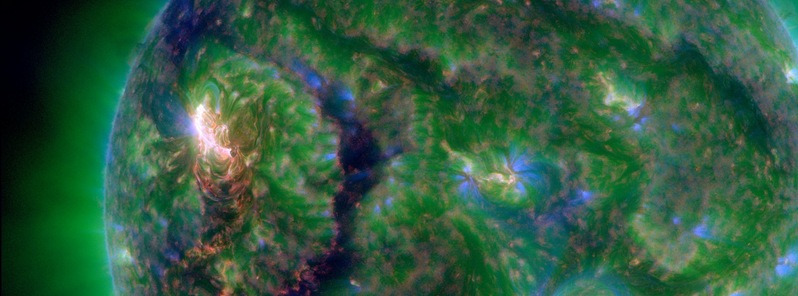
Beta-Gamma classified Region 2371 produced a long duration M3.0 solar flare peaking at 17:35 UTC on June 18, 2015. The event started at 16:25 and ended at 19:00 UTC. A full-halo Coronal Mass Ejection (CME) was produced, it will likely make a glancing blow at Earth late June 21 or early June 22.
A Type IV Radio Emission was observed starting at 16:57 UTC. Type IV emissions occur in association with major eruption on the Sun and are typically associated with strong CMEs.
Additionally, a 10cm Radio Burst lasting 39 minutes with peak flux of 2 200 sfu was associated with this event. This indicates that the electromagnetic burst associated with a solar flare at the 10cm wavelength was double or greater than the initial 10cm radio background. It can be indicative of significant radio noise in association with a solar flare. This noise is generally short-lived but can cause interference for sensitive receivers including radar, GPS, and satellite communications.
At 12:30 UTC today, SWPC forecasters noted they expect solar activity to be low with a chance for M-class (R1-R2/Minor-Moderate) flare activity over the next three days, June 18 – 20, 2015.
Update:
An asymetric, full-halo CME was first observed in SOHO/LASCO C2 imagery at 17:24 UTC on June 18. Analysis and a WSA-Enlil model run indicate a likely glancing blow at Earth late on June 21/early June 22.
***end of update***
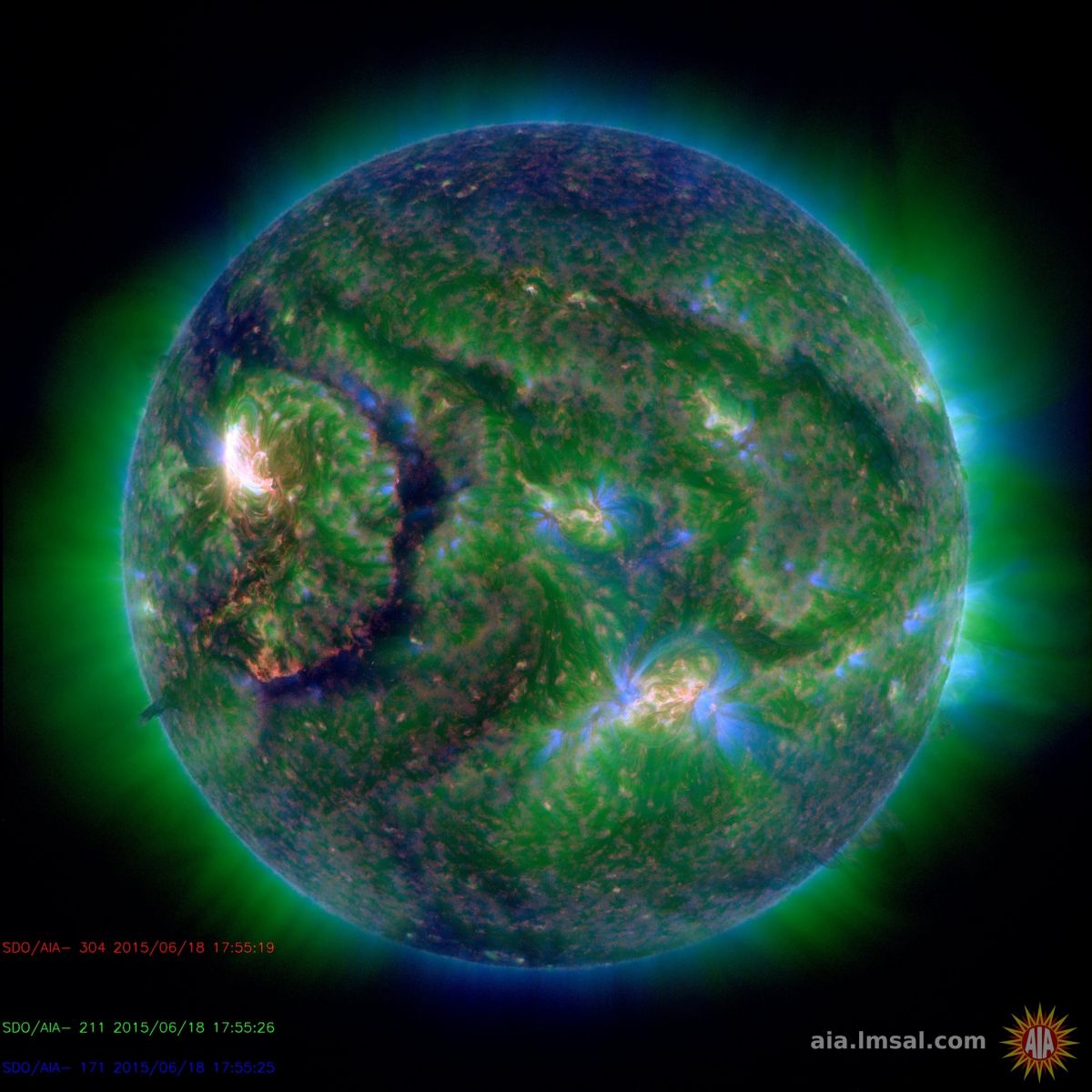
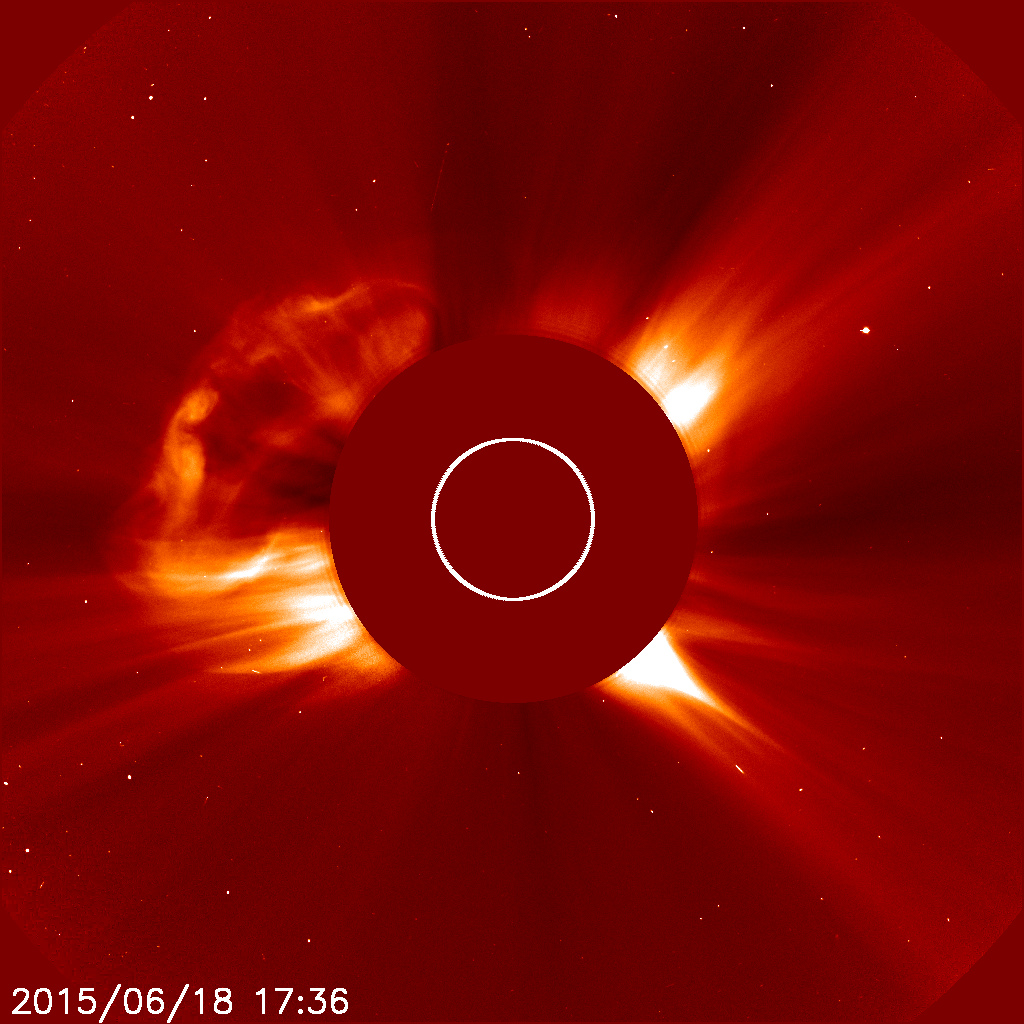
Image credit: NASA/ESA SOHO/LASCO C2.
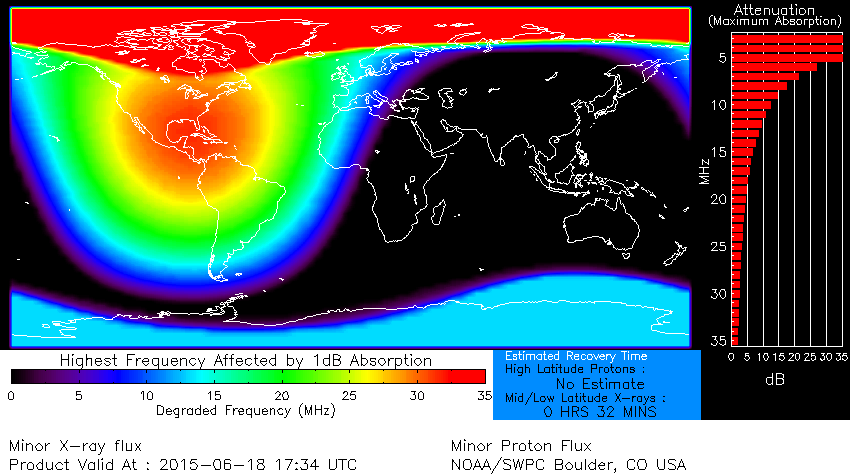
***
Space Weather Message Code: ALTTP4
Serial Number: 504
Issue Time: 2015 Jun 18 1738 UTC
ALERT: Type IV Radio Emission
Begin Time: 2015 Jun 18 1657 UTC
Description: Type IV emissions occur in association with major eruptions on the sun and are typically associated with strong coronal mass ejections and solar radiation storms.
***
Space Weather Message Code: SUM10R
Serial Number: 663
Issue Time: 2015 Jun 18 1801 UTC
SUMMARY: 10cm Radio Burst
Begin Time: 2015 Jun 18 1703 UTC
Maximum Time: 2015 Jun 18 1713 UTC
End Time: 2015 Jun 18 1742 UTC
Duration: 39 minutes
Peak Flux: 2200 sfu
Latest Penticton Noon Flux: 136 sfu
Description: A 10cm radio burst indicates that the electromagnetic burst associated with a solar flare at the 10cm wavelength was double or greater than the initial 10cm radio background. This can be indicative of significant radio noise in association with a solar flare. This noise is generally short-lived but can cause interference for sensitive receivers including radar, GPS, and satellite communications.
***
Sunspots
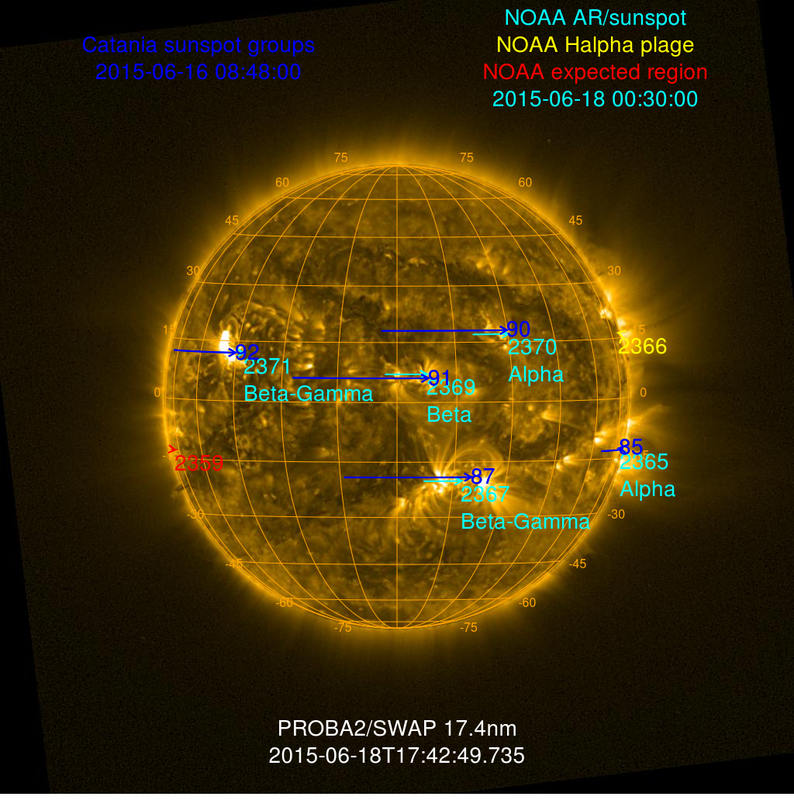
Sunspots on June 18, 2015. Image credit: ESA/PROBA2/SWAP.
Region 2365, source of today's M1.2 solar flare and large CME, has rotated off the southwest limb and is starting its farside rotation.
Region 2371 (beta-gamma), which is currently the largest region on the disk, exhibited growth in the intermediate spots during the past 24 hours. Region 2367 (beta-gamma) remained mostly stable with slight decay noted around the trailer and intermediate spots.
Earlier today…
Long duration M1.2 solar flare off the southwest limb produces large CME, solar radiation storm
A long duration M1.2 solar flare erupted from the vicinity of departing Region 2365, off the southwest limb, at 01:27 UTC on June 18, 2015. The event produced a large Coronal Mass Ejection (CME) and is currently causing solar radiation storm on Earth, reaching S1 (Minor) levels.
The CME is directed away from the Sun-Earth line, but both proton and electron flux are currently on the rise. They are expected to subside towards moderate and background levels by June 20, 2015.
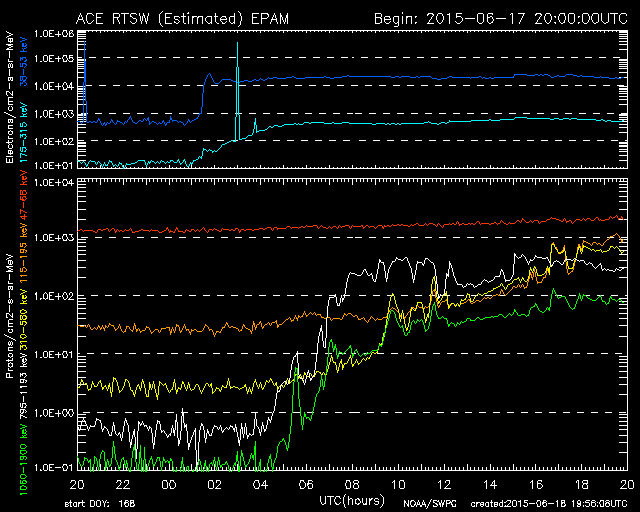
Today's M1.2 solar flare event started at 00:34, peaked at 01:27 and ended at 02:05 UTC.

Featured image credit: NASA SDO/AIA composite – June 18, 2015.

Please, everyone seeing this can you please do research on these links.
https://www.youtube.com/watch?v=J0j24FRIDms&list=PLEBGwaCdaqWIMq0l9GdR8iD0nAZMwOMQP –
http://ra-el.org/DIPLOMATIC%20BRIEFING%20VIDEO.html –
http://ra-el.org/faq.html –
http://ra-el.org/evidence.html –
https://www.youtube.com/watch?v=uK-Yh220Bbo&list=PLCC22153BF1FCE5F0 –
https://www.facebook.com/notes/international-congregation-of-lord-rayel/teachings-of-the-ecumenical-order-ofchrist/777647825580598 –
http://ra-el.org/ –
https://www.facebook.com/groups/ICoLR/ –
https://twitter.com/LORD_RAYEL –